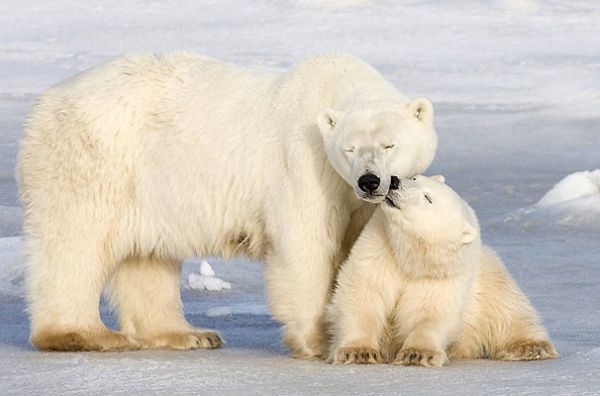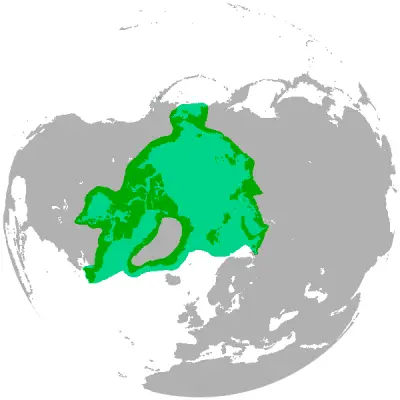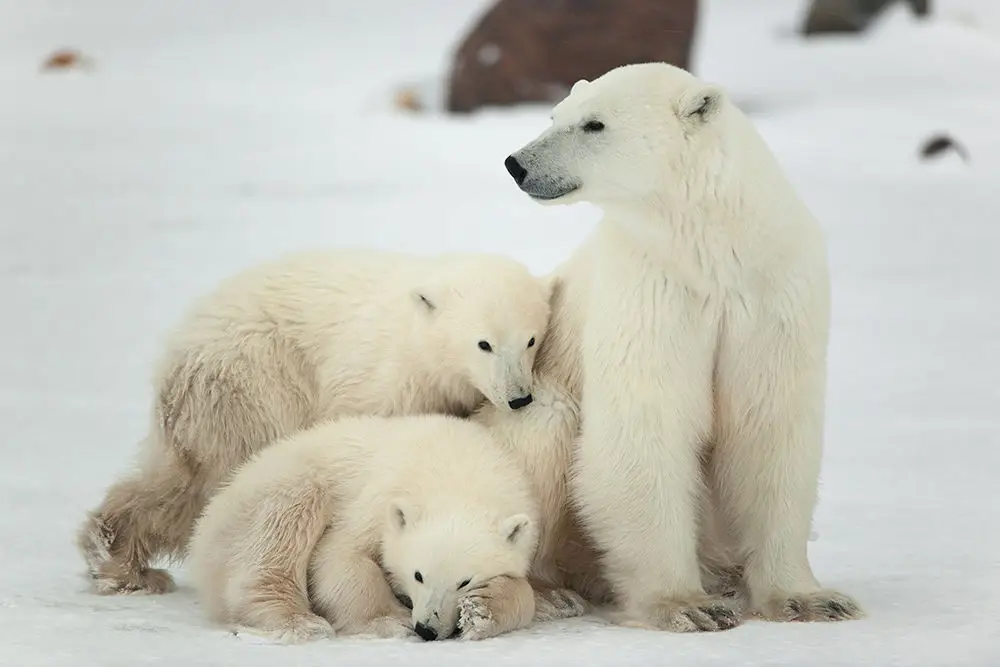Polar Bear (Ursus maritimus)- one of the largest predators on Earth and the real owner of the Arctic. Its adaptation to harsh environments, unique physiological features, and huge role in the ecosystem make it a unique species.
This mammal is a symbol of wildlife and one of the key indicators of climate change, because its existence is closely linked to the state of sea ice. In this article, we will take a detailed look at the life of a polar bear: its biological features, behavior, food habits, threats and protection measures.

1. General characteristics of the polar bear
🔬 Scientific classification:
✔ The Kingdom: Animals (Animalia)
✔ Type: Chordal (Chordata)
✔ Class: Mammals (Mammalia)
✔ Row: Predatory animals (Carnivora)
✔ Family: Bearish (Ursidae)
✔ Gender: Bears (Ursus)
✔ View: Polar Bear (Ursus maritimus)
📍 Habitat range:
✔ Arctic region – Canada, Alaska (USA), Greenland, Norway (Svalbard), Russia
✔ Mainly lives on sea ice, but can go on land
📏 Sizes:
✔ Males: 2,4-3 m in length, weight-350-800 kg
✔ Females: 1.8-2.5 m in length, weight-150-400 kg
📌 Interesting!
The largest recorded Polar bear weighed 1002 kg and had a length of 3.39 m!
🏃 Speed:
✔ On land – up to 40 km / h
✔ In water-up to 10 km / h
🌡 Temperature range:
✔ Withstands temperatures up to -50°C thanks to its thick fat and thick fur
2. Appearance and anatomy
🔹 Wool and leather:
✔ White coat reflects sunlight, providing camouflage in the snow
✔ Under the coat-black skin that absorbs heat
✔ Undercoat and a thick layer of fat (up to 10 cm) help keep you warm
🔹 Paws:
✔ Large paws (up to 30 cm in diameter) with webbing-ideal for swimming
✔ Wool between the fingers and hard pads provide grip on ice
🔹 Teeth and jaws:
✔ Have long canines (up to 5 cm) that help tear meat
✔ Powerful jaws can bite thick bones
📌 Interesting!
Polar bear hair actually transparent! It appears white due to the reflection of light.

3. Lifestyle and behavior
🏡 Territory:
✔ Males have huge territories - up to 600,000 km2
✔ Females occupy smaller territories – up to 125,000 km2
🛶 Migrations:
✔ Follow the drifting ice in search of food
✔ Some bears can overcome up to 1000 km in search of food
🌙 Daily activity:
✔ Bears are active both day and night
✔ During the polar night, they are guided by an excellent sense of smell

4. eating habits and hunting behavior
🍽 Basic diet:
✔ Seals-main food (ringed and lakhtak seals)
✔ Other marine mammals (walruses, dead whales)
✔ Fish, poultry, eggs, plant foods (in summer)
🔪 Hunting methods:
✔ Ambush near the breathing holes of seals in the ice
✔ Swimming and sneaking in the water
✔ Breaking ice with powerful paws
📌 Interesting!
A polar bear can feel the seal under the snow at a depth of 1.5 km!
5. reproduction and life cycle
💑 Mating season:
✔ April-June
✔ Males fight for females in fierce battles
🐣 Pregnancy and birth:
✔ Pregnancy-8 months
✔ 1-3 cubs are born in special snow dens
🐻 Mother and cubs:
✔ Cubs stay with their mother for 2-3 years
✔ Training for hunting and survival in harsh environments
📌 Interesting!
Newborn cubs weigh only 600-700 g "like a carrot!"
6. threats and species protection
⚠ Main threats:
✔ Climate change - melting ice makes hunting difficult
✔ Arctic pollution - accumulation of toxins in the food chain
✔ Hunting and poaching
⚖ Security measures:
✔ Listed in the IUCN Red List
✔ Introduction of nature reserves and national parks
✔ Indigenous hunting restrictions
📌 Interesting!
On Earth, there is only 26,000 polar bears.

7. Role in culture and ecosystem
🌍 Environmental role:
✔ Controls the seal population
✔ Important for the health of marine ecosystems
🎭 Place in culture:
✔ Symbol of the Arctic
✔ Used in logos, art, literature
✔ It is a mascot of environmental movements
📌 Interesting!
Polar bear - one of the symbols Of Canada!
Conclusion
Polar Bear (Ursus maritimus)- the real ruler of the Arctic. Its unique physiological characteristics, incredible stamina and hunting ability make it one of the most efficient predators on the planet.
However, due to climate change and loss of the natural environment, its population has been threatened. Only responsible environmental policies and conservation measures can help preserve this amazing predator for future generations.
